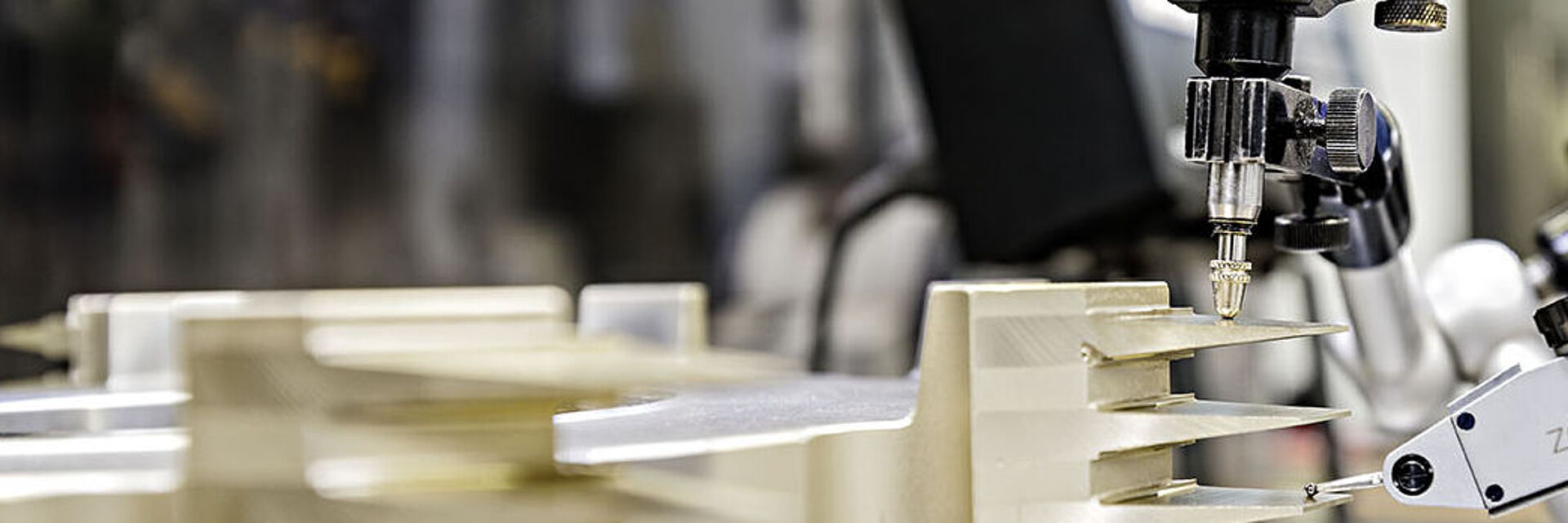Pfeifer plant manager Dietmar Seelos repeatedly finds enormous potential for optimization on the tool level. Often it is quality improvements that the "old fox" converts into a higher product value. And if the new tool results in ten times the tool life - all the better.
At Pfeifer we are constantly optimizing, says Dietmar Seelos, authorized signatory and plant manager at Pfeifer Group in Imst.: „You can't keep up with them.”I see potential for improvement with every round through the factory. But you also get ideas from the outside, for example from the Holzkurier," he tells the trade magazine Blumen. Meanwhile, ideas are one thing, but you also need a congenial partner. Pfeifer seems to have found him in Markus Gritsch from the Leitz branch in Imst.
Imst is the location for further processing within the Pfeifer Group, producing shuttering panels, 3-layer natural wood panels, 1-layer solid wood panels, BSH, planed goods and the sawmill by-products are processed into pellets and briquettes. „In principle a complete value chain, we are mainly customers of our own sawmills. A sawmill on its own is hardly economically operable in today's world, every refining step helps to make the company more broadly based," Seelos notes.
Optimization potential is not always apparent at first glance, explains Leitz consultant Gritsch: "A good example of this is the project that we started at the Kundl plant. There we reduced the kerf of the Linck from initially 3.5mm to 3.0mm. We want to transfer this method to other production areas as well. I In the natural wood panel plant, for example, we have reduced the kerf from 2.7 to 2.2mm and the middle layer from 2.8 to 2.4mm. And further projects are in progress". It is important to find the balance between cutting width and stability, Seelos reports from practical experience: "The combination of material efficiency and service life is decisive. It's no use having extremely thin kerf joints, but not being able to move because we are constantly changing sawblades. So it is always a compromise: how far does it make sense to reduce the kerf at the highest possible performance". Material savings due to thinner kerf, does it help so much? "A raw material saving of one or two tenths doesn't sound like much, but at the end of the year it means a considerable amount of material," answers Seelos. „As always in the industry, high quality and high productivity is important. Which means above all requirements regarding the performance and service life of tools. The divisor is always quantity divided by cost".
Occasionally, massive savings could also result from the demand for a simple quality improvement, Seelos explains: "We have long been bothered by the high wear in the area of the (hard) glue joints and the resulting poor edge quality of the shuttering panels". Leitz solved this problem with the latest know-how from the window manufacturing sector: "Many innovations, like the new hybrid tools, originate from the window manufacturing sector, because there has always been a need to combine high product quality and high tool life. In the meantime, such quality is also demanded of timber construction products. The technology is available to Leitz, we simply adapt it to the requirements of the wood industry.“ In this particular case, a combination of PCD and carbide was the solution: "Until now, many people thought that diamond and solid wood did not fit. In this area it does fit - we have inserted a PCD cutting edge in front of the carbide where the greatest load is, i.e. in the area of the glued joint. This not only results in a much better cutting quality, because the carbide cutting edge no longer gets a notch. It also has an eminent effect on set-up times. We checked the results and found that the tool life was ten times longer. “ Seelos admits: "This can already be considered a success. We used to have to change the tool every shift, now we can use the new tool for a whole week.“ To achieve such a sense of achievement, the interaction with Leitz is important, he nods in the direction of Gritsch: "We test and optimize together.“
In the wood industry, there are now solutions for numerous problems, says Gritsch: "We have more and more possibilities to optimize. Even with planing knives - we have been changing over to coated Marathon knives in general throughout the entire Pfeifer Group for a long time now". Industrial requirements are undoubtedly high, "but I think we are quite good at it." And he shows a coated finger-jointing set: "It has been in continuous operation in shifts for two years and has been resharpened countless times," he says. Wear or even blue tooth tips are not visible. "You just have to set the feed rate and cutting speed correctly, then it will last for a long time, even under industrial loads," says Gritsch. And plant manager Dietmar Seelos smiles: "We are very satisfied with this cooperation and continue to hope for successful projects. “
Reference: "Holzkurier" (Ausgabe 08/2020)
